An online project under the direction of the CAPE ANN MUSEUM
inv. 82
Burning of the Packet Ship "Boston"
1830 Watercolor 19 x 26 3/4 in. (48.3 x 68 cm) No inscription found
|
Additional material
Explore catalog entries by keywords view all keywords »
Historical Materials
Below is historical information related to the Lane work above. To see complete information on a subject on the Historical Materials page, click on the subject name (in bold and underlined).
Oil on canvas
Cape Ann Museum, Gloucester, Mass., Bequest of E. Hyde Cox (1998.36.01)
Filed under: "Boston" (Packet Ship) » // "Cadet" (Brig) » // Knight, Elias Davis »
Letter regarding the burning of the packet ship "Boston"
Cape Ann Museum, Gloucester, Mass.
"Dear Sir, Agreeable to your request that I would write something to attach to the picture in your possession of the Burning of the Packet Ship Boston in 1830, your object I suppose more fully to establish the fact that it is really one of the early productions of our fellow townsman and afterward most distinguished artist Fitz H. Lane.
The picture was drawn the same year by Mr. Lane from a sketch I made soon after the disaster aided by one of the passengers S.S. Osgood Esq. afterward a distinguished portrait painter. Mr. Lane had made not reputation of course at this time as an artist. And probably had received no instruction. It afforded me great pleasure to present this picture to you who was so devoted to him, knowing full well tho nothing very great of itself would be highly appreciative [...] as the early work of that [...] particular friend."
Filed under: "Boston" (Packet Ship) » // Knight, Elias Davis » // Letters » // Stevens, Joseph, Jr. »
Wood, brass, paint
9 1/2 h. x 11 3/4 diam. inches
Cape Ann Museum. Bequest of Marion Mansfield Patterson Livingston. (2012.27)
Salvaged from the burning wreck of the packet ship Boston which was lost at sea in 1830. This disaster was the subject of Lane’s earliest known watercolor painting.
Filed under: "Boston" (Packet Ship) » // Objects »
The 428 ton packet ship "Boston" was built at Medford in 1828, by Thacher Magoun for the Boston & Liverpool Line, whose individual shareholders have not been found. The Boston agent was George G. Jones; the Liverpool agent was Latham & Gair. Sailings were scheduled thus: from Boston the 1st of each month; from Liverpool the 20th of each month.
This packet line was originally organized to provide direct sailings between Boston and Liverpool. This plan was hampered by lack of high-value cargos for the eastward passage, an advantage held by New York packets which shipped high value farm produce received from the Midwest via the Erie Canal. An attempt was made by Boston merchants to have the government fund the building of a railroad (horse-drawn) to deliver similar goods from Albany to Boston. The effort failed, leaving Boston packets with insufficient high-value cargos to ship directly to Liverpool, forcing them to sail first to Charleston for a cargo of cotton which was then shipped to Liverpool. This detour eliminated passengers for the east-bound voyage, again hurting the line’s profitability.
Henry C. Mackay was “Boston’s” master, and may have been a share-holder. Given the size of the business (6 ships), he could hardly be ship master and a major owner, managing company business at sea. In 1830 he sailed from Boston to Charleston, where he took on a cargo of cotton for Liverpool. A few days out from Charleston, the ship was struck by lightning and burned on May 26, 1830. In 1830, the Boston & Liverpool Line ceased operating.
– Erik Ronnberg
References:
Carl C. Cutler, Queens of the Western Ocean (Annapolis, MD: U.S. Naval Institute, 1961), pp. 196, 197, 371.
Hall Gleason, Old Ships and Ship-Building Days of Medford. (West Medford, MA: J.C. Miller, Jr., 1936).
Letter regarding the burning of the packet ship "Boston"
Cape Ann Museum, Gloucester, Mass.
"Dear Sir, Agreeable to your request that I would write something to attach to the picture in your possession of the Burning of the Packet Ship Boston in 1830, your object I suppose more fully to establish the fact that it is really one of the early productions of our fellow townsman and afterward most distinguished artist Fitz H. Lane.
The picture was drawn the same year by Mr. Lane from a sketch I made soon after the disaster aided by one of the passengers S.S. Osgood Esq. afterward a distinguished portrait painter. Mr. Lane had made not reputation of course at this time as an artist. And probably had received no instruction. It afforded me great pleasure to present this picture to you who was so devoted to him, knowing full well tho nothing very great of itself would be highly appreciative [...] as the early work of that [...] particular friend."
Also filed under: Knight, Elias Davis » // Letters » // Stevens, Joseph, Jr. »
Handwritten journal
Cape Ann Museum Library & Archive
"Charleston towards Liverpool. 26th day of May, 1830. Commences with fresh breezes and squally weather at 1 P.M. . . .At 11 P.M. very thundering and sharp lightening. The second flash struck the ship, burnt the main hatch and knocked down the steward, Isaac Hopkins, a sailor. . . We single reefed the main topsail and were about to land the mainsail when we found the ship to be on fire. We immediately cleared the main hatch and after hatch to get at the fire and commenced heaving the cotton overboard out holes in the deck, and plied water in every direction but all in vain. . . .The flames raged with such violence and consumed the vessel so quick that nothing could be saved from the wreck. We got about 40 gallons of water, and provisions sufficient on a short allowance to keep the passengers and crew alive for three weeks. . . .About three hours time had changed one of the best ships that ever swam the ocean to a complete volcano."
Harris Broadside Collection
Link to broadside in Brown online collection.
Also filed under: Coffin, William E. » // Mackay, Capt. Harvey Coffin and Mrs. Sarah Somes »
Oil on canvas
Cape Ann Museum, Gloucester, Mass., Bequest of E. Hyde Cox (1998.36.01)
Also filed under: "Cadet" (Brig) » // Knight, Elias Davis »
Wood, brass, paint
9 1/2 h. x 11 3/4 diam. inches
Cape Ann Museum. Bequest of Marion Mansfield Patterson Livingston. (2012.27)
Salvaged from the burning wreck of the packet ship Boston which was lost at sea in 1830. This disaster was the subject of Lane’s earliest known watercolor painting.
Also filed under: Objects »
The term "ship," as used by nineteenth-century merchants and seamen, referred to a large three-masted sailing vessel which was square-rigged on all three masts. (1) In that same period, sailing warships of the largest classes were also called ships, or more formally, ships of the line, their size qualifying them to engage the enemy in a line of battle. (2) In the second half of the nineteenth century, as sailing vessels were replaced by engine-powered vessels, the term ship was applied to any large vessel, regardless of propulsion or use. (3)
Ships were often further defined by their specialized uses or modifications, clipper ships and packet ships being the most noted examples. Built for speed, clipper ships were employed in carrying high-value or perishable goods over long distances. (4) Lane painted formal portraits of clipper ships for their owners, as well as generic examples for his port paintings. (5)
Packet ships were designed for carrying capacity which required some sacrifice in speed while still being able to make scheduled passages within a reasonable time frame between regular destinations. In the packet trade with European ports, mail, passengers, and bulk cargos such as cotton, textiles, and farm produce made the eastward passages. Mail, passengers (usually in much larger numbers), and finished wares were the usual cargos for return trips. (6) Lane depicted these vessels in portraits for their owners, and in his port scenes of Boston and New York Harbors.
Ships in specific trades were often identified by their cargos: salt ships which brought salt to Gloucester for curing dried fish; tea clippers in the China Trade; coffee ships in the West Indies and South American trades, and cotton ships bringing cotton to mills in New England or to European ports. Some trades were identified by the special destination of a ship’s regular voyages; hence Gloucester vessels in the trade with Surinam were identified as Surinam ships (or barks, or brigs, depending on their rigs). In Lane’s Gloucester Harbor scenes, there are likely (though not identifiable) examples of Surinam ships, but only the ship "California" in his depiction of the Burnham marine railway in Gloucester (see Three Master on the Gloucester Railways, 1857 (inv. 29)) is so identified. (7)
– Erik Ronnberg
References:
1. R[ichard)] H[enry] Dana, Jr., The Seaman’s Friend, 13th ed. (Boston: Thomas Groom & Co., 1873), p. 121 and Plate IV with captions.
2. A Naval Encyclopaedia (Philadelphia: L. R. Hamersly & Co., 1884), 739, 741.
3. M.H. Parry, et al., Aak to Zumbra: A Dictionary of the World’s Watercraft (Newport News, VA: The Mariners’ Museum, 2000), 536.
4. Howard I. Chapelle, The History of American Sailing Ships (New York: W.W. Norton & Co., 1935), 281–87.
5. Ibid.
6. Howard I. Chapelle, The National Watercraft Collection (Washington, DC: Smithsonian Institution, 1960), 26–30.
7. Alfred Mansfield Brooks, Gloucester Recollected: A Familiar History (Gloucester, MA: Peter Smith, 1974), 67–69.
Photograph
From American Clipper Ships 1833–1858, by Octavius T. Howe and Frederick C. Matthews, vol. 1 (Salem, MA: Marine Research Society, 1926).
Photo caption reads: "'Golden State' 1363 tons, built at New York, in 1852. From a photograph showing her in dock at Quebec in 1884."
Also filed under: "Golden State" (Clipper Ship) »
Oil on canvas
24 x 35 in.
Peabody Essex Museum, Salem, Mass.
Walters' painting depicts the "Nonantum" homeward bound for Boston from Liverpool in 1842. The paddle-steamer is one of the four Clyde-built Britannia-class vessels, of which one is visible crossing in the opposite direction.
View related Fitz Henry Lane catalog entries (2) »
Also filed under: Packet Shipping » // Walters, Samuel »
Packet shipping was conducted by vessels of many types in many regions over the last four centuries, but the packets depicted by Lane were the products of nineteenth-century mercantilism and the Industrial Revolution. The packets sailing out of Boston and New York for European ports were large vessels, invariably ship-rigged, and if not as sharp-ended as clipper ships, had sufficiently fine hull forms to make fast, if not record, passages.
A packet ship's highest priority was delivery of mail on a regular schedule. Passengers and high-value trade goods occupied the considerable remaining hold space. This was particularly true of west-bound passages, which brought fine European wares and throngs of immigrants to America. East-bound passages brought professionals, students, travelers, and high-value raw and semi-finished materials to European ports, mainly Britain and France, and to a lesser extent, the Netherlands and Germany.
East-bound cargos were dominated by southern products - baled cotton, rice, tobacco, and naval stores. These were delivered to New York and other northern ports by coastal packets (mainly brigs and small ships) for transatlantic shipment. Northern products included flaxseed, iron ore, fruit, wool, hides, and flour. Delivery times were on average well within 30 days, giving credence to the packet lines' promise of scheduled delivery.
West-bound passages, which meant sailing against the wind, took longer—34 to 40 days on average, depending on the port of departure. Cargos and passengers were a far more varied lot with little of the consistency of east-bound counterparts.
Lane's paintings depict Boston and New York packet ships in the peak years of their employment. The Civil War, coupled with the development of reliable steam engines for marine propulsion, posed challenges the sailing ship could not overcome. Coastal packet lines went quickly, the transatlantic lines lasting into the 1870s.
– Erik Ronnberg
Reference:
Robert G. Albion, Square-Riggers on Schedule (Princeton, NJ: Princeton University Press, 1938).
Photograph
Johnson, H. and Lightfoot, F.S.: Maritime New York in Nineteenth-Century Photographs, Dover Publications, Inc., New York
Also filed under: New York Harbor »
Oil on canvas
24 x 35 in.
Peabody Essex Museum, Salem, Mass.
Walters' painting depicts the "Nonantum" homeward bound for Boston from Liverpool in 1842. The paddle-steamer is one of the four Clyde-built Britannia-class vessels, of which one is visible crossing in the opposite direction.
View related Fitz Henry Lane catalog entries (2) »
Also filed under: Ship (Full-Rigged) » // Walters, Samuel »
Elias Davis Knight was the first officer of the Packet Ship "Boston" at the time of the disaster. He made the sketch on which Lane's painting was based, and gave the painting to Joseph L. Stevens, Jr. after Lane's death. (1)
(1) Sarah Dunlap and Stephanie Buck, Fitz Henry Lane: Family and Friends (Gloucester, MA: Church & Mason Publishing; in association with the Cape Ann Historical Museum, 2007), 80; 132.
Letter regarding the burning of the packet ship "Boston"
Cape Ann Museum, Gloucester, Mass.
"Dear Sir, Agreeable to your request that I would write something to attach to the picture in your possession of the Burning of the Packet Ship Boston in 1830, your object I suppose more fully to establish the fact that it is really one of the early productions of our fellow townsman and afterward most distinguished artist Fitz H. Lane.
The picture was drawn the same year by Mr. Lane from a sketch I made soon after the disaster aided by one of the passengers S.S. Osgood Esq. afterward a distinguished portrait painter. Mr. Lane had made not reputation of course at this time as an artist. And probably had received no instruction. It afforded me great pleasure to present this picture to you who was so devoted to him, knowing full well tho nothing very great of itself would be highly appreciative [...] as the early work of that [...] particular friend."
Also filed under: "Boston" (Packet Ship) » // Letters » // Stevens, Joseph, Jr. »
Oil on canvas
Cape Ann Museum, Gloucester, Mass., Bequest of E. Hyde Cox (1998.36.01)
Also filed under: "Boston" (Packet Ship) » // "Cadet" (Brig) »
Captain Harvey Coffin Mackay (1787–1869) and Sally (Sarah) Somes were married in 1816 and built their home at 19 Pleasant Street in 1842. Notably, Mackay was the captain of the packet ship "Boston." For several years before he built his house on Duncan's Point, Lane rented a house on their property (on Elm Street) as his studio and as a home for himself, his mother, and the Winter family.
According to the inscription on Somes Sound, Looking Southerly, 1850 (inv. 178) "Lane made this sketch sitting in the stern of the boat General Gates as we slowly sailed up the sound at Mt. Desert on a lovely afternoon of our first excursion there. He painted a small picture from this his first sketch of that evening. It was sold by Balch to Mrs. Josiah Quincy, Jr. and to Mackay." (1)
(1) Sarah Dunlap and Stephanie Buck, Fitz Henry Lane: Family and Friends (Gloucester, MA: Church & Mason Publishing; in association with the Cape Ann Historical Museum, 2007).
Harris Broadside Collection
Link to broadside in Brown online collection.
Also filed under: "Boston" (Packet Ship) » // Coffin, William E. »
Essex County, MA: Probate File Papers, 1638-1881 (Probate #46669)
For Essex County records online.
". . . and to Mr. Epes Sargent Junr. all my Paintings and more especially the paintings executed by Mr. Fitz Henry Lane."
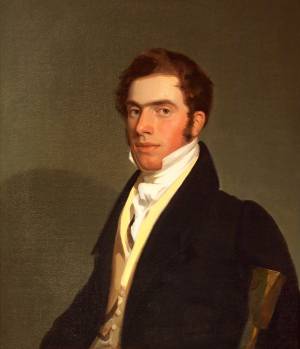
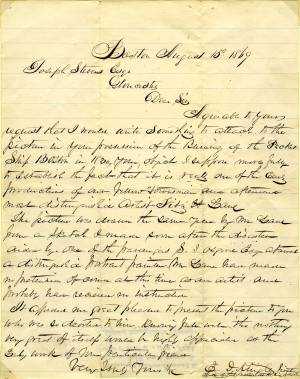
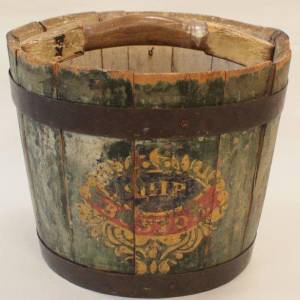
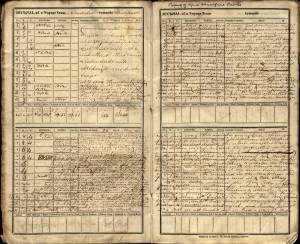

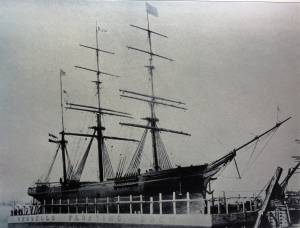
_sm.jpg)

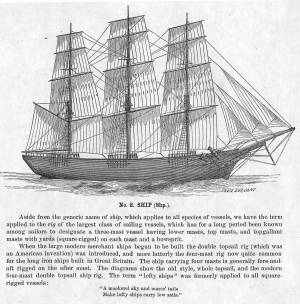
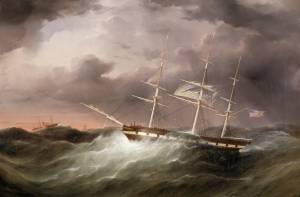


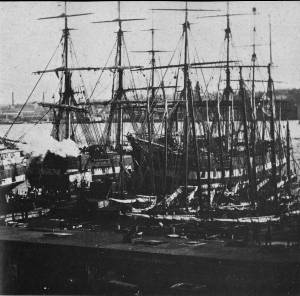
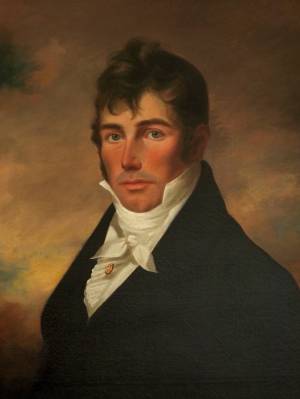
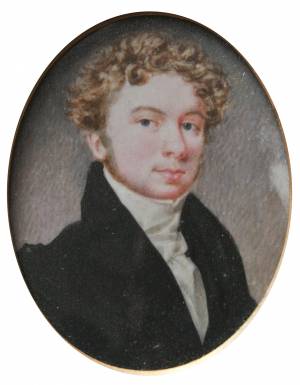
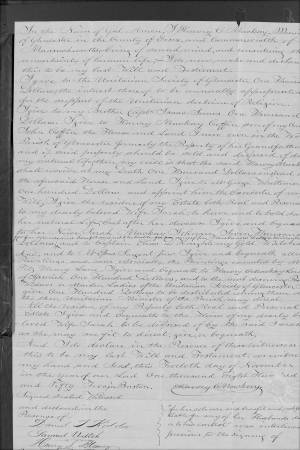
Commentary
The Burning of the Packet Ship "Boston" is the earliest-known painting by Fitz Henry Lane and a rare and dramatic example of his work in watercolor. Done in 1830, when Lane was in his midtwenties, the painting reflects the efforts of an untrained but ambitious artist. The waves, the clouds, and the billows of smoke are all highly stylized; John Wilmerding has noted that the work’s “decorative charm recalls Chinese scroll paintings or Japanese prints.” (1)
While the composition is rich in detail, from the damaged standing rigging lying slack against the side of the vessel to the lifeboats full of survivors just visible in the foreground, the repletion of colors and shapes gives the work an overall sense of flatness. For all its naïveté, however, the work foreshadows the greatness Lane would soon achieve.
The ship "Boston" was built in Medford, Massachusetts, and used in the packet trade between Charleston, South Carolina, and Liverpool, England. In the spring of 1830, while under the command of Captain Harvey Coffin McKay (1787–1869) of Gloucester and carrying a load of cotton and passengers, the vessel was struck by lightning and eventually sank. The first mate on the ship was Elias Davis Knight (1804–1884) also of Gloucester. All of the passengers except one survived, and Knight was able to salvage the ship’s log and water bucket before the vessel sank. Fitz Henry Lane was not on the "Boston" at the time disaster struck. Rather, he did this painting using a sketch done by artist Samuel S. Osgood (1808–1885), who was on board. He also had an oral description of the event provided by the first mate.
In 1869, Elias Davis Knight gave this watercolor to Lane’s close friend Joseph L. Stevens, Jr. Whether Knight had had the work in his possession since its creation remains unknown. Harvey Coffin McKay, captain of the "Boston," is known to have owned examples of Lane’s work; in his will, drawn up shortly before his death in 1869, McKay noted the following: "…to Mr. Epes Sargent, Junr. I give and bequeath all my paintings and more especially the paintings executed by Mr. Fitz Henry Lane."
– Martha Oaks
(1) John Wilmerding, Fitz Henry Lane. (Praeger Publishers, Inc., 1971; repr., Gloucester Cape Ann Historical Association, 2005), 19.
[+] See More